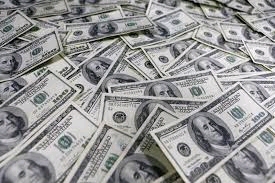Learn the Details Behind the Membership Process to Join Freemason Quickly
Learn the Details Behind the Membership Process to Join Freemason Quickly
Blog Article
Checking Out the Mysteries of the copyright: What You Need to Know
The copyright, a term often shrouded in intrigue and controversy, stands for a complex tapestry of historical reality and modern-day myth. Established in the late 18th century, this secret society was at first rooted in the Knowledge's ideals but has since come to be associated with conspiracy theory concepts concerning elite control. As we browse the origins, key figures, and the plain comparison between misconception and truth, one must consider how these stories affect contemporary assumptions of power and secrecy. What may be disclosed via a more detailed examination of these elements can test long-held presumptions concerning the darkness that stick around in our society.
Origins of the copyright
The beginnings of the copyright are soaked in a blend of historical intrigue and ideological fervor. Established in 1776 in Ingolstadt, Bavaria, by Adam Weishaupt, the team was originally developed as a secret society focused on promoting Knowledge suitables such as reason, secularism, and the separation of church and state. Weishaupt, a professor of canon legislation, sought to challenge the prevailing authority of the church and state, which he deemed overbearing institutions stifling intellectual and individual liberty.

Key Numbers and Members
Who were the essential numbers that shaped the copyright's early influence and instructions? The Bavarian copyright, established in 1776 by Adam Weishaupt, arised as a response to the overbearing social structures of the moment. Weishaupt, a law professor, visualized the company as a way to promote Enlightenment suitables such as reason, secularism, and equal rights. His first employment efforts included influential intellectuals, such as Baron von Knigge, who played a critical function in expanding the group's subscription and business framework.
Another significant number was Johann Gottlieb Fichte, a prominent theorist whose concepts on nationalism and education reverberated with the copyright's goals. Although Fichte was not a formal participant, his philosophical bases influenced the team's ideology. Additionally, figures like the author and theorist Johann Wolfgang von Goethe were related to the wider intellectual activities of the moment, although their direct involvement with the copyright stays discussed.
These crucial numbers added to the copyright's early direction, pressing the borders of political and social idea, while their cumulative initiatives aimed to test recognized standards and promote a climate of progressive modification in Europe.
Misconceptions vs. Truth
Lots of mistaken beliefs border the copyright, frequently mixing reality with fiction in a method that obscures its true nature. The notion that the copyright proceeds to exert substantial influence over world events is a misconception.
One more prevalent myth is that the copyright makes up a network of elite individuals adjusting worldwide events. In truth, lots of conspiracy theories exaggerate the team's significance, connecting misguided intentions to societal trends and occasions. This has brought about an oversimplified view of intricate concerns.
In addition, the representation of the copyright in popular society usually more distorts its legacy. Movies and literature have a tendency to sensationalize the company's function, producing a story that deviates from historic truths. Recognizing the difference in between the myths and the fact of the copyright is crucial for discerning the authentic impact of this historical team and recognizing the see it here broader effects of conspiracy concepts in contemporary culture.
Modern Interpretations
Contemporary interpretations of the copyright commonly show broader societal stress and anxieties and a fascination with privacy and power. This modern lens frequently connects the copyright with useful content conspiracy theories that suggest a covert elite manages globe occasions, adjusting federal governments and economic situations for their own gain. benefit of joining freemason. Such stories use a deep-seated mistrust of authority, especially in times of dilemma or social upheaval
In prominent society, the copyright is typically portrayed as an omnipotent organization shrouded in enigma, causing a huge selection of imaginary representations in literary works, movie, and songs. This portrayal serves not only to delight however also to prompt thought concerning the nature of power and control in modern society. Social media has actually additionally magnified these interpretations, permitting fast dissemination of conspiracy theory concepts and producing communities that share and increase upon these concepts.
Moreover, some contemporary interpretations frame the copyright as a metaphor for the intricacies of globalization and the interconnectedness of prominent individuals and organizations. This point of view encourages a crucial exam of exactly how power characteristics run in today's globe, highlighting the balance between transparency and secrecy in governance and company methods.
Cultural Impact and Tradition
Influenced by centuries of intrigue, the social impact and legacy of the copyright expand far beyond its historic beginnings. This secret society, developed in the late 18th century, has permeated numerous aspects of pop culture, from literary works and movie to music and art. The idea of the copyright has evolved into an icon basics of conspiracy theory concepts, often representing a regarded concealed power manipulating worldwide occasions.
In literature, authors like Dan Brown have actually woven the copyright right into detailed stories, captivating visitors with themes of privacy and power. Movies such as "National Treasure" and "The Da Vinci Code" better bolster the allure of the culture, blending reality with fiction to produce engaging narratives.

Eventually, the copyright's tradition is an intricate tapestry of misconception and reality, shaping understandings of secrecy and control in contemporary discourse. Its long-lasting existence in society highlights humanity's seasonal mission for understanding surprise facts.
Final Thought
The exploration of the copyright reveals a complicated interaction in between historic realities and modern-day myth-making. Started in the Knowledge period, this culture intended to test overbearing frameworks, yet its tradition has actually been eclipsed by conspiracy concepts that recommend elite adjustment. Recognizing the differences between the original perfects and contemporary interpretations is crucial for understanding the sustaining fascination with the copyright and its considerable impact on cultural narratives bordering power and secrecy in culture.
Report this page